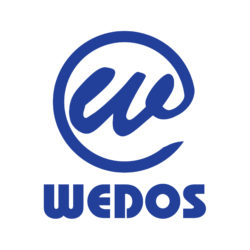This time we will explore the features and parameters of the Fujitsu Eternus DX60 storage device, equipped with 4x 300GB SAS drives connected to RAID 5
The storage was loaned by Fujitsu Technology Solutions s.r.o.The Fujitsu Eternus DX60 storage device consists of two controllers and two power supplies. Everything is housed in a 2U enclosure. Depending on the type, we can connect either 12 3.5″ drives or 24 2.5″ drives to the controllers. With 24 3.5″ drives, we can achieve a physical capacity of up to 48TB with 790W power consumption, of which the heat loss is 2844kJ/h. While with 24 2.5″ drives we can reach a physical capacity of “only” 7.2TB at 410W power consumption and 1476kJ/h heat loss. Each controller is driven by an 800MHz processor, has a 1GB cache and can connect 32 clients via iSCSI. On the back side we can find several outputs on each controller. In addition to the optical and SAS outputs, there are also 4 Ethernet ports. Two of them are for management and two are for connecting to clients.
Main features
- Redundant controllers and resources are hot swappable, ensuring 99.99% service availability.
- The cache protector uses a capacitor to keep data in memory and write it later during a power failure.
- Redundant copies significantly reduce recovery time and thus greatly reduce the risk of permanent data loss.
- Data Block Guard adds parity bits to all data blocks to ensure maximum data integrity on disk and in the cache.
- Eco-mode reduces disk speed, resulting in lower power consumption and reduced heat loss.
Management
Device management is possible either from the web server, which is built into the storage, or from the Eternus SF Express software. For our purposes, a web server was enough. After logging in root:root, we will see the device status screen as usual. In other tabs we can create RAIDs (0, 1, 1+0, 5, 5+0 and 6), volumes, map LUNs to individual ports, send error messages, set up iSCSI, etc.
Consumption
Our storage device is not fully populated with disks, so the consumption is lower than the maximum claimed consumption of 790W. We have 4 SAS Cheetah drives with 15000 rpm from Seagate. The power consumption is as follows.
| no-load tapping | 180W |
| sampling with a load of disks | 186W |
Speed
As part of our comprehensive storage testing, we tested the average transfer rate of the device. The testing consisted of moving a 10GB large file from the ramdisk to the server and back via a 1Gb/s switch. In both operations we achieved real speeds of around 70 MB/s.
Experience
Apart from the fact that one of our discs went out after a few days (which is not the fault of the storage itself, either it was not a quality piece or it didn’t like the shipping service’s journey to us), we have had a good experience. We connected 4 servers to the storage, tried different loads (working with a large file, a large number of small files) – everything worked as it should, the speeds were satisfactory.
















